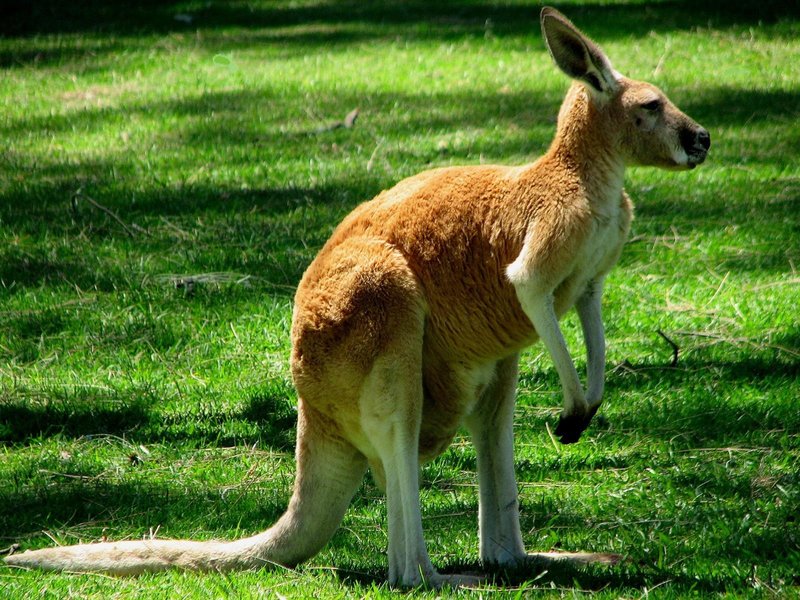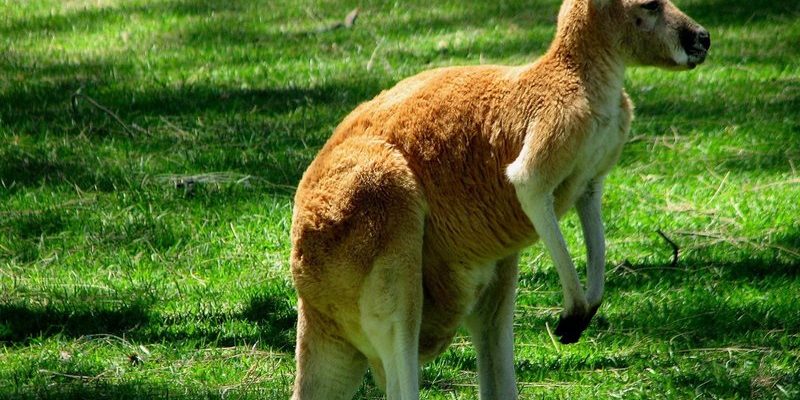
Imagine a desert where temperatures soar during the day and plunge at night—a world where food and water can be hard to come by. In this setting, kangaroos showcase their incredible resilience. They’ve evolved a series of skills and traits that help them navigate this tough terrain, akin to how we might prepare for a long hike. From their unique digestive systems to their water conservation methods, every aspect of their existence tells a story of survival against the odds.
Unique Physiology: Built for Survival
Kangaroos possess a fascinating set of physical traits that help them thrive in harsh environments. For starters, their long legs and large feet are designed for powerful leaps, enabling them to cover vast distances quickly. This is especially useful when searching for food or escaping predators. Imagine trying to navigate a rocky terrain; having strong legs gives you a significant advantage, right?
But it’s not just about agility. Kangaroos have a unique way of digesting food that sets them apart. They house a complex stomach with multiple chambers that allow them to break down tough plant material. This is crucial in an environment where quality food might be scarce. By extracting maximum nutrients from their meals, they can sustain their energy levels even when food options are limited.
Another interesting aspect of their physiology is their ability to regulate body temperature. During the sweltering heat of the day, kangaroos often lick their forearms to cool down. This behavior is similar to how we might sip on water to stay hydrated. Meanwhile, at night, they conserve heat, using their fur like a natural blanket.
Water Conservation: The Key to Survival
Water is life, especially in arid regions where rain might be a rare event. Kangaroos have developed remarkable adaptations that allow them to thrive with minimal water intake. They are not just hopping around aimlessly; they’ve got a game plan!
One of their most significant survival tactics is their ability to extract moisture from the food they eat. Kangaroos primarily feed on grasses and leaves that contain water, which leads to a diet rich in hydration. Think about it—eating a juicy fruit when you’re thirsty. It’s a win-win!
Additionally, kangaroos can tolerate dehydration better than many other mammals. They can lose up to 20% of their body weight without suffering major health effects. This is akin to us sipping on water sparingly during a long day outdoors. When they finally do find water, they drink deeply, replenishing their reserves.
Behavioral Adaptations: Social Skills in Tough Times
Kangaroos are social animals, often seen in groups called mobs. This social structure isn’t just for companionship; it has practical benefits, too. Being part of a mob helps kangaroos spot predators more efficiently and places them in a position of safety. Think of it like a group of friends hiking together—there’s safety in numbers.
When it comes to finding food, the dynamic within these groups plays a crucial role. Younger kangaroos can learn from the elders about where the best food sources are. This collective knowledge is vital in areas where food is scarce, as it optimizes resource gathering and benefits the whole group.
Moreover, kangaroos are also known to be smart about when to forage. They typically choose cooler parts of the day—either early morning or late afternoon—when the sun isn’t scorching. Picture yourself waiting until evening for a comfortable stroll instead of heading out under the blazing sun; it’s a strategy that pays off.
Adaptations to Temperature Extremes
Surviving in extreme temperatures is no picnic, but kangaroos have mastered the art. During the hot parts of the day, they seek shelter in shady areas, allowing their bodies to cool down naturally. This retreat is somewhat like how we might find a cozy spot indoors during a heat wave.
On chilly nights, kangaroos use their thick fur to help retain body heat. Their fur acts like insulation, much like how we bundle up in warm clothing when temperatures drop. This dual approach—not overexerting themselves during the day and preserving warmth at night—keeps them in top shape for the ongoing challenges of their environment.
Interestingly, kangaroos can even regulate their metabolism based on temperature. When it’s really hot, they slow their metabolic rate to conserve energy, much like how we might take a break to recharge during oppressive heat.
Reproductive Strategies: Timing is Everything
Reproduction is another area where kangaroos exhibit incredible adaptability. They time their breeding cycles to align with more favorable environmental conditions. For instance, kangaroos often give birth during the wetter seasons when food is more abundant and the weather is milder. This timing ensures that the young joeys can access sufficient nourishment to grow strong and thrive.
Kangaroo mothers also have the unique ability to pause their pregnancy during tough times, a phenomenon known as embryonic diapause. This means if food is scarce or the environment is harsh, they can delay the development of their embryo until conditions improve. It’s a fascinating survival tactic that highlights their resilience and ability to adapt to their surroundings.
Once born, joeys remain in their mother’s pouch for several months, feeding on nutrient-rich milk. During this time, they’re protected from the elements and can grow in a safe environment, ultimately increasing their chances of survival.
Impact of Climate Change: A Growing Challenge
As adaptable as kangaroos are, they aren’t immune to the challenges posed by climate change. Increasing temperatures and unpredictable rainfall patterns can threaten their habitats and food sources. With the changing climate, their traditional survival strategies may no longer suffice, making their future uncertain.
Kangaroos rely heavily on their ability to adapt, but rapid changes in their environments can outpace their natural coping mechanisms. You might be wondering how this impacts us. Healthy kangaroo populations are essential for maintaining ecological balance in their habitats. Protecting them is crucial not only for their survival but also for the health of the entire ecosystem.
Additionally, conservation efforts are increasingly focused on reducing human impact on their habitats. By preserving natural resources and ensuring that kangaroos can thrive in their environments, we can help support these incredible animals in their ongoing fight for survival.
Kangaroos are extraordinary survivors, showcasing remarkable adaptations that allow them to flourish in some of the harshest conditions. From their physical traits and social structures to their clever reproductive strategies, they exemplify nature’s ingenuity. However, as they face new challenges brought on by climate change, the need for awareness and conservation efforts has never been more critical.
Understanding how kangaroos survive can inspire us to appreciate these remarkable creatures and consider our role in preserving their habitats. So next time you think of a kangaroo, remember it’s more than just a cute face—it’s a symbol of resilience and adaptability in a world that can often be unforgiving.

